The image immediately comes to mind of the medieval battlefield of knights properly dressed in armor, castles built of stone, and fighting swords. The time of the Middle Ages was full of nonstop advancements and inventions. Challenges to keep kingdoms safe and on top led inventors, engineers, and generals to make important inventions for fighting wars. Many changes, such as the thundering cannons and the quiet but strong horse collar, altered military tactics, toppled states, and gave new opportunities to fight wars. Contrary to popular belief, the medieval age was full of changes as people came up with new things because they had to. Each of the ten medieval technologies below represents a mark on world history as the result of human inspiration during a war.
10. Gunpowder Artillery: The Architects of Obsolescence
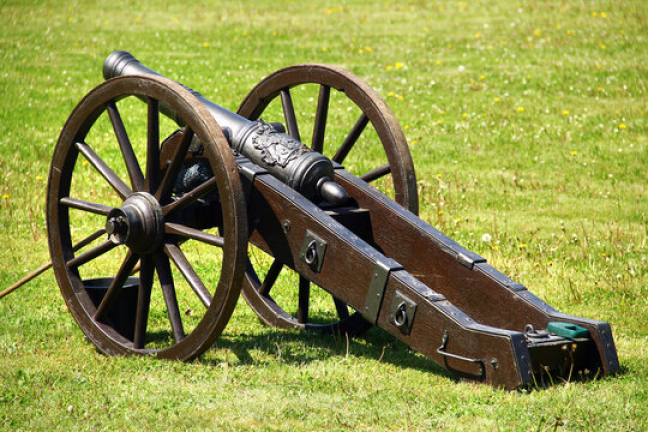
Even though the janissaries participated in taking Constantinople, it was Hungarian engineer Orban’s giant cannon bombardment that brought its fall in 1453. The monster, made with bronze, threw stones weighing over 1,200 pounds to break walls created to resist catapult shots. Back then, the appearance of Mons Meg (built-in 1449) demonstrated that those skilled in chemistry and metallurgy would dominate wars. Star-shaped forts taking over from castles happened in 1500 mainly because architects used cannons as parts of their fortifications. The age of chivalry faded away in a big and dramatic moment.
9. The Concentric Castle: Geometry as Defense
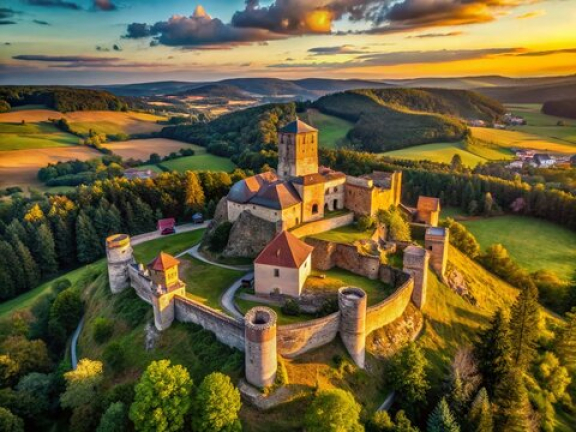
During the Crusader times, Krak des Chevaliers’ knights fought using its many walls as a fortification. People attacking concentrated castles would be pushed into places where they would likely die while trying to get inside. The walls outside took the impact of the trebuchet, and the ones inside protected the defenders. Anyone trying to enter through the gate could be showered with boiling oil or quicklime from the openings called machicolations. These stone puzzles used Limestone Mountains but proved nearly impregnable: only treachery or starvation could conquer them.
8. Plate Armor: Walking Fortresses
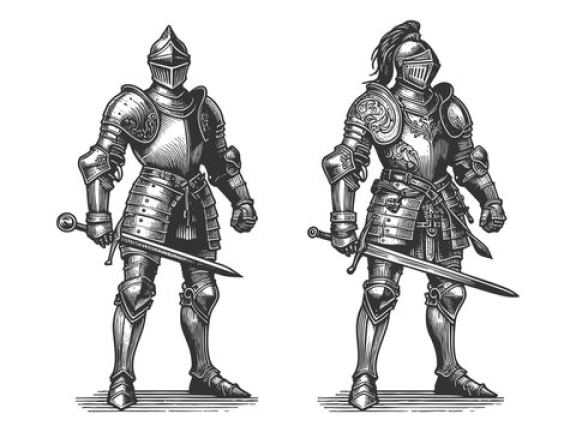
15th-century knights resembled steel sculptures—but this art saved lives. Articulated plate armor, shaped via water-powered trip hammers, could deflect crossbow bolts at close range. A well-fitted suit weighed just 45 pounds—less than a modern infantry pack—and distributed weight through clever jointing. At Agincourt (1415), dismounted French knights slogged through mud under armor for hours, exhausted but alive under arrow storms. The plate didn’t make men invincible, but it turned battles into grinding slogs where resilience trumped brute force.
7. The English Longbow: Muscle-Powered Ballistics
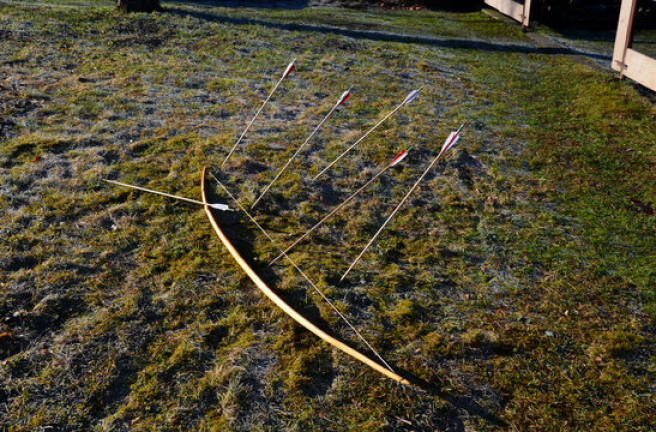
Mary Rose shipwreck excavations revealed the longbow’s grisly toll: skeletons with deformed left arms, twisted spines, and thickened right fingertips from a lifetime of drawing 150-pound bows. Such sacrifice birthed a battle-winner. At Crécy (1346), yeoman archers firing 12 arrows per minute shredded French cavalry. The longbow’s secret was “spine efficiency”: yew staves stored energy like springs, propelling arrows that could pierce mail at 250 yards. It demanded societal commitment—archery practice was mandatory in English villages—but rewarded nations with portable firepower.
6. The Trebuchet: Physics as Siege Engineer
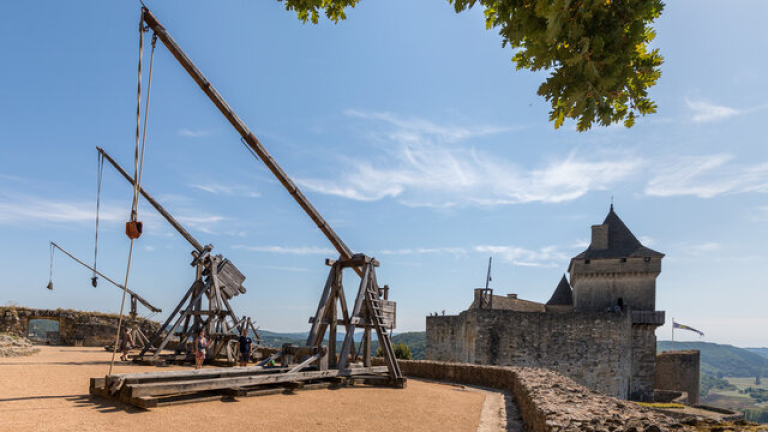
Medieval engineers transformed gravity into a weapon. The counterweight trebuchet—perfected by 1200—used a falling weight box (up to 20 tons) to sling 300-pound stones 300 yards. Unlike tension-driven catapults, it didn’t weaken in rain. At Carcassonne in 1240, trebuchets flung diseased carcasses over walls, spreading plague among defenders 9. Its psychological impact was brutal: during the Siege of Stirling Castle in 1304, Edward I’s “Warwolf” hurled flaming projectiles day and night until the garrison surrendered—without a single wall breached.
5. Greek Fire: Byzantium’s Liquid Fortress
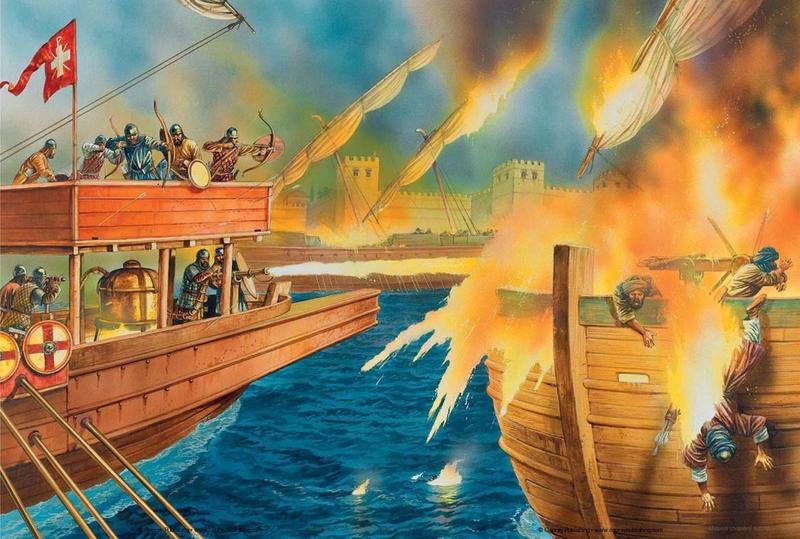
When Arab fleets besieged Constantinople in 678 CE, Emperor Constantine IV unleashed a horror: fire that clung to water and screamed as it burned. Greek Fire—a pressurized siphon-sprayed napalm of pine resin, niter, and sulfur—turned seas into infernos. Its exact formula died with Byzantine chemists, but its tactical legacy endured. For 700 years, this terror weapon shielded Christendom’s eastern flank, allowing outnumbered fleets to incinerate invaders. Without it, the Crusader kingdoms might never have been resupplied.
4. The Crossbow: Democracy’s Artillery

Condemned by the 1139 Lateran Council as “hateful to God,” the crossbow threatened the nobility’s monopoly on violence. Their mechanics made guns special: a simple winch or lever crank could create a huge pull of 1,000 pounds, which was enough for a shot to break plate armor at 60 yards. People did not need long years of practice to be proficient with a crossbow, as they did with a longbow. In the 14th century, steel-prod crossbows, which used cranequin mechanisms, allowed ordinary people to murder knights remotely, so knights decided to use less protective plate armor and better brigandine. Siege defense would undergo a major change.
3. The Stirrup: Shock Combat’s Silent Partner
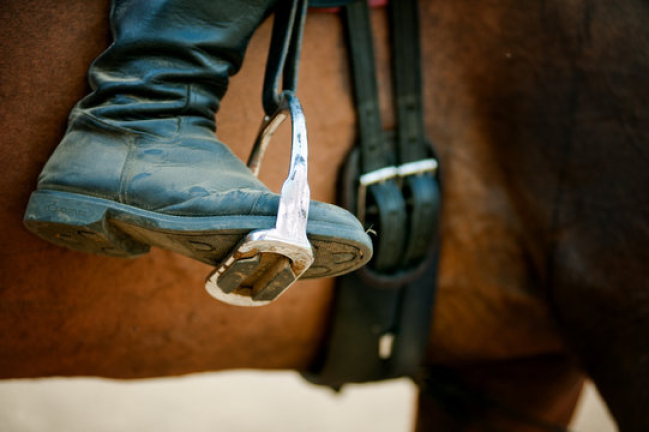
The Frankish military changed greatly in the 8th century mainly because of how Charles Martel led his cavalry, using bravery and the right knowledge of physics. Riders could use a stirrup to brace their legs during the power of their horse’s movement. Instead of getting shoved backward by a thrust, a knight could use all his effort in the weapon. With horses, soldiers could move as a single force to knock down the walls of enemies. By working with high-cantle saddles, the invention of the stirrup made it possible for Europe’s knights to mount an attack and charge down infantry lines with ease.
2. The Horse Collar: Galloping Logistics
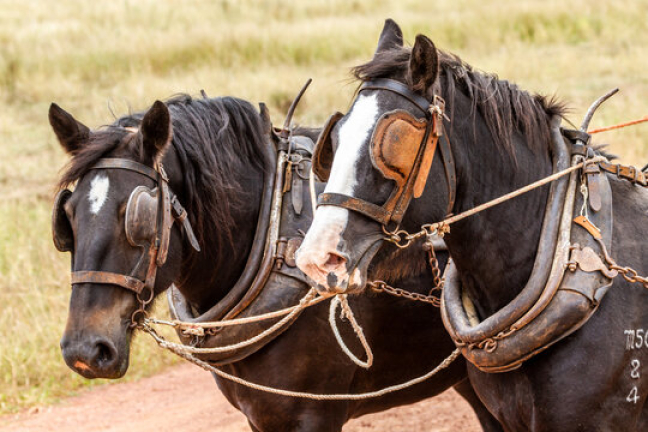
Oxen drew out grain movement, while horses brought more speed and excitement. There were safety issues with the first harnesses as they caused the horses to choke, decreasing what they could pull. A modification made during the 8th century, the horse collar did not cause work stress to the throat anymore. Because horses wore iron shoes in the 9th century, they could pull loads 50% heavier than oxen, go for longer distances, and keep working even when the roads were slippery due to rainfall. Now, armies could quickly get siege engines where needed, restock troops on the border every week, and fight in winter when it was impossible. Attacks on territory got more frequent.
1. The Heavy Wheeled Plough: Fueling Armies with Farmland
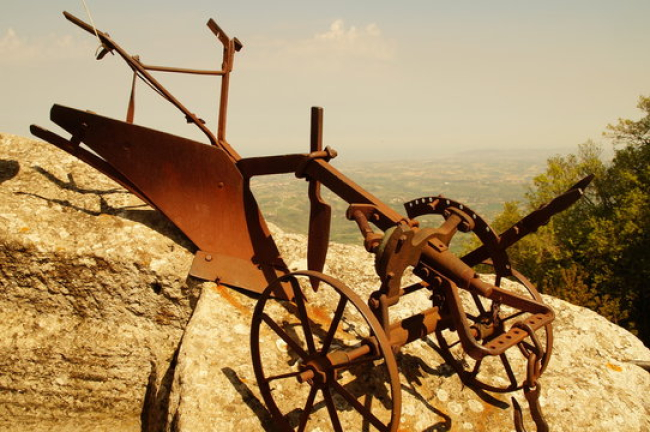
Before the two armies went to war, they first had to gain control of the land. The carruca, which had an iron blade and a moldboard, was used in the 9th century to plow northern Europe’s firm lands and make them fertile. Unlike scratch plows, it went deeper into the soil and took care of weeds by burying them. Thanks to this, farming soil in valleys that were considered unsuitable for growing crops became possible. An increase in the calories gathered per acre meant the human population exploded. By 1086, England’s Domesday Book recorded over 6,500 watermills grinding grain from these fields, each supporting a village capable of feeding knights and archers. War’s logistics began at the plowshare.
Echoes in the Smoke
These 10 medieval technologies didn’t merely change battles—they redrew societies. Crossbows eroded feudal hierarchies; horse collars enriched merchant towns supplying armies; Greek fire preserved empires. What united them was ingenuity under constraint: faced with starvation, invasion, or extinction, medieval minds reimagined physics, chemistry, and biology. Their legacy endures in modern tanks (stirrups for mobility), biometric armor (plate customization), and drone swarms (longbow volleys). The true “Dark Ages” were anything but dark—they were laboratories where desperation forged revolutions.
During the Middle Ages, technology changed weapons, tactics, and even the way wars were fought at a breakneck rate. For example, the longbow and crossbow made armies had to reassess how they set up their troops and how they defended themselves. As seen at Agincourt and Crécy, English longbowmen could kill a lot of cavalry before they ever got to close combat by standing behind barriers or on high ground.
Gunpowder artillery, which came around in the late Middle Ages, changed siege warfare and fortress architecture in a big way. Cannons could break through even the thickest castle walls, making many old defensive constructions useless. This led builders to design new star-shaped forts and bastions that were better able to withstand bombardment. These advancements weren’t only in weapons. New ideas like the horse collar and heavy plow changed logistics, making it easier for armies to transfer supplies and siege engines, which allowed for bigger and longer campaigns. In the end, every new technology not only transformed the way wars were fought, but it also changed the society that fought them. This shows how deeply invention and military growth are connected.

